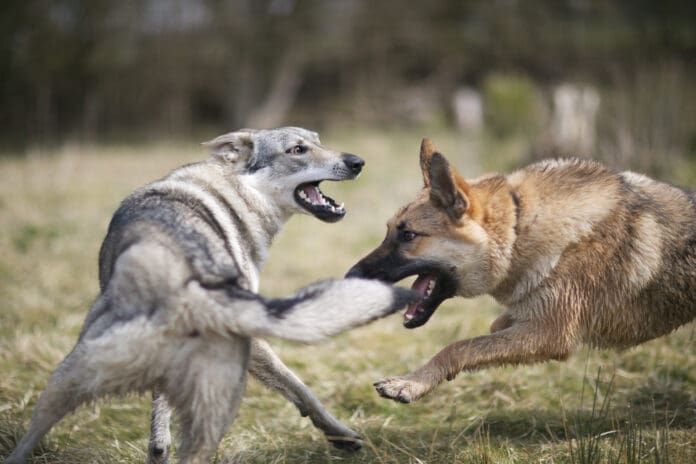Rabies is a fatal viral disease that is usually transmitted by a bite from an infected animal, although infected saliva simply contacting a break in the skin can transmit it too. The virus travels along nerves from the site of the bite to the central nervous system and brain, and finally to the salivary glands. The incubation period (time from exposure to onset of signs) is highly variable, anywhere from three weeks to six months. Rabies can affect both humans and animals.
Stage 1: Prodromal Phase
The earliest signs of rabies in dogs are anxiety, nervousness, mild agitation, unusual behavior changes, itchiness, and fever. These usually last two to three days before getting worse and include anxiety, nervousness, mild agitation, unusual behavior changes, itchiness, and fever before progressing to the aggression stages.
Stage 2: Rabies Furious Phase
The next phase, called the furious phase, lasts one to seven days with signs including aggression, unpredictability, attacking their crates if confined, snapping at apparently nothing, disorientation, incoordination, tremors and seizures. Depression, lethargy, weakness, and any neurologic derangement (e.g., blindness, circling, head pressing) may occur. Death can occur at any time during this phase.
Stage 3: Rabies Paralytic Phase
The final phase of rabies infection is called the paralytic phase. Dogs will begin to drool as they can no longer swallow. There may be a noticeable change in their voice, they will lose jaw tone and function, and they will become progressively paralyzed. Death usually occurs within two to four days.
It’s important to know that an animal could have rabies virus in their saliva up to five days BEFORE showing any signs of rabies, making it prudent to use caution around any unvaccinated dog who suffers a bite wound from an unknown animal for a full six months.
No Treatment for Rabies
There is no treatment for rabies, which is why the emphasis is on prevention. The foundation of rabies prevention is vaccination. The rabies vaccine for dogs is called a “killed” vaccine. This means there is no live virus in the vaccine so it can never accidentally infect a dog. It also makes the vaccine is generally very safe. Having said that, any time any vaccine is given there is always the risk of side effects.
Reactions to any vaccine may be mild (general malaise and inappetance lasting 24 hours or less), moderate (hives, facial swelling, vomiting/diarrhea), or severe (anaphylactic shock which may be life-threatening). There may be fever and localized pain at the injection site. The rabies vaccine sometimes leaves a bump under the skin (granuloma) which may takes months to go away. And finally, there are reports of a rabies vaccine-induced vasculitis occasionally occurring. Vasculitis is inflammation of blood vessels, and it can result in loss of blood supply to tissue. It starts near the site of the injection and can cause hair loss, swelling, pain, and skin damage.
The first rabies vaccine can be given to puppies at 12 weeks of age. A booster is recommended one year later, then every one to three years depending on state and local laws. Boosters every three years is typically the norm but be sure to check with your veterinarian and local municipality.






